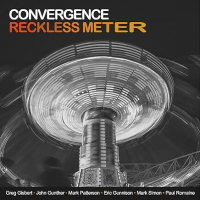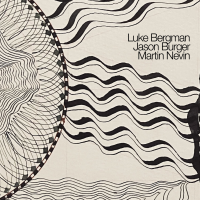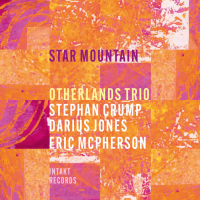Home » Jazz Articles » Album Review » Bob Dylan: The Bootleg Series Volume 21: To Be Likened L...
Bob Dylan: The Bootleg Series Volume 21: To Be Likened Later, Spring 65: The Forgotten Gil Evans Sessions
So when Wilson, in a bar on a break during the final two mid-January '65 sessions that would birth the young bard's game changing Bringing It All Back Home (Columbia, 1965), Wilson ordered another bourbon to consider his mad idea. Put into proper historical perspective, Wilson was approximately five months away from producing "Like A Rolling Stone" and mixing a rock band with Simon & Garfunkel's failed first acoustic single "The Sounds of Silence" thus mid-wifing what is now known in even the least of intellectual coffee klatches as folk rock.
The Bootleg Series Volume 21: To Be Likened Later, Spring 65: The Forgotten Gil Evans Sessions is the shockingly coherent results of Wilson's feral design. Spreading across four CDs, Wilson teams Dylan's musical barbarism with Gil Evans spirited clouds of harmony, nuanced orchestration, and brass colorations for a set that is not only daring and daunting, but playful and remarkably satisfying for collectors.
Recently discovered by an intern in a closet of discarded floppy discs at the main branch of the Toronto Public Library's Gil Evans Room (Evans was a Toronto native) the tape canisters were marked "To Be Likened Later, Spring 65" and, until now, unheard and forgotten. Scraps of ephemera include manuscript paper in Evans' own hand (verified by non other than Ashley Kahn; two session log sheets authenticated by Wilson's estate plus a scrap of a lyric the Dylan people are copyrighting as "Fingerprint Smile" serve to explain and unearth a berth of hitherto unknown recordings.
Green lighted by Dylan and the Wilson and Evans estates, the set includes testimonies from many a Dylan scholar (Robert Fino and Clinton Heylin among them) plus an extensive and expansive essay by jazz detective numero uno, Zev Feldman. As CD 1 (4/1/65) begins, we overhear Evans candidly attesting I really like this one to the gruff sincerity of Dylan's "Love Is Just a Four Letter Word." Imagining a muted trumpet alight over the chorus, Dylan responds positively with Hey hey how about this one Gil and begins to sing Hollis Brown, he lived on the outskirts of town . . . The tune's dark holler inspires Evans to Studio 2's grand piano. Think the sound of foreboding he says his left hand commanding an unsettling, prairie blown thunder. Dylan, either rapt with sheer enthusiasm, stoned bemusement or a wee bit of both, turns to Wilson in the control booth, and says yea Tom, let's do this!
Thus is the intimacy of Volume 21.
A man of notation, Evans intones Let me make a few notes and let's try a few more. Dylan seems uncertain as to what to reveal, and begins a sparse, yet overtly melodic "Farewell, Angelina" a tune he left off the completed Another Side of Bob Dylan (Columbia, 1965). Still at the piano, Evans takes the melody up a key. These two might sound pretty with horns n strings Dylan enthuses, then commences to astound those gathered with "Mr. Tambourine Man" and "Love Minus 0/No Limit."
CD 2 finds Evans with something resembling an orchestra in attendance. Flutes, oboes, trumpet, French horn, bass, drums, guitars, viola, violins, and tympani. The session notes are gone so the musicians remain unknown. Dylan sings Nothin defines her savage style / like her ruby, fingerprint smile. The take is quickly scrapped seemingly for Dylan's inability to settle on a temporary, if complete lyric.
One of the true revelations of Volume 21 is found towards the end of CD 2 when Dylan, revealing a country vocal croon pre Nashville Skyline (Columbia, 1969) and an interest in the Bible pre Born Again era (1979-81) sing/speaks the story of Saul on the road to Damascus accompanied by muted trumpet, bass, and Evans' gospel-like piano The warrior found on Straight Street / had repented / of all the wrong / he represented.
Evans wants to unmute the trumpet. Then he inquires: What else have you got that's new that isn't stuck in place or in your mind? Dylan, always bursting with ideas, delivers only a chorus Days of us not forgotten / You and me and the night so lonely but the bassist picks up a vibe and runs with it. In the fields of gin and cotton / The days of us not forgotten Dylan improvises. The violins pick up the melody as the oboe flutters in the air.
CD 3 begins the next of the four sessions. It would appear that overnight Evans has perfected his charts. Dylan, obviously aping Frank Sinatra or Bing Crosby, steps to the mic as the music, like cumulus clouds over an opening day baseball game, croons the opening verse of "Love Is Just a Four Letter Word." The song moves at a pastoral pace. Dylan gets more comfortable. Stretches the syllables, holds the harmony. His voice more like a warm brandy than the ruffian rock n roller. Wilson's mad idea is going to work. Two more takes of "Love Is Just . . ." After three false starts and one rough go round, "Fingerprint Smile" is set aside for later. Evans sets the violins into motion. Dylan picks up the melody. "Chimes of Freedom" ensues.
The charged air never neutralizes, even when a twenty-five minute trial run through something listed as "Joanna's Bracelets" (credited to Dylan/Evans) stops, starts, bogs down and strains for words. Joanna's bracelets tease the sun Dylan implores, as Evans' score, part Aaron Copeland's "Fanfare for the Common Man" and Horace Silver's "Calcutta Cutie" hiccups and fades away to a piccolo whisper. "That's one for later," Wilson directs over the talk back. For skeptic and purist alike, there's a lot more later to be relished on The Bootleg Series Volume 21: To Be Likened Later, Spring 65: The Forgotten Gil Evans Sessions.
Track Listing
CD 1: Studio Chatter; Love Is Just A Four Letter Word (partial); Love Is Just A Four Letter Word (complete acoustic take); Studio chatter; Ballad of Hollis Brown; Gil takes notes; Ballad of Hollis Brown (Gil’s piano version); More chatter; Farewell Angelina; Gil’s excitement; Bob responds; Mr. Tamborine Man (acoustic takes 1 &2); Love Minus Zero/No Limit; Chatter. CD 2: Gil Explains to Assembled Musicians; Warm-up; Fingerprint Smile (false starts, takes 1-4); Breakdown; Stardust; Orchestra run through; Stardust; Spoken word Straight Street; Studio chatter; Love Minus Zero/No Limit (full orchestration); Days of Us Not Forgotten. (snippet); Don’t Let the Stars Get In Your Eyes (false start); Don’t Let the Stars Get In Your Eyes (takes 1-3); Chatter; Ballad of Hollis Brown. CD 3: Love Is Just A Four Letter Word (orchestral version); Love Is Just A Four Letter Word (master take); Don’t Let the Stars Get In Your Eyes (master take); Fingerprint Smile (takes 1-4); Dylan break down; Chatter; Days of Us Not Forgotten (version with trumpet); Gil gets down to business; Chimes of Freedom (warm up); Chimes of Freedom (take 1). CD 4: Chimes of Freedom (master); Chatter; Days of Us Not Forgotten (breakdown); Farewell Angelina (run through); Farewell Angelina (master); Joshua Gone Barbados (Dylan solo); Joanna’s Bracelets (whole session); Gil’s Interlude; Chatter.
Personnel
Album information
Title: The Bootleg Series Volume 21: To Be Likened Later, Spring 65: The Forgotten Gil Evans Sessions | Year Released: 2024 | Record Label: April 1st Records
Tags
PREVIOUS / NEXT
Support All About Jazz
 All About Jazz has been a pillar of jazz since 1995, championing it as an art form and, more importantly, supporting the musicians who make it. Our enduring commitment has made "AAJ" one of the most culturally important websites of its kind, read by hundreds of thousands of fans, musicians and industry figures every month.
All About Jazz has been a pillar of jazz since 1995, championing it as an art form and, more importantly, supporting the musicians who make it. Our enduring commitment has made "AAJ" one of the most culturally important websites of its kind, read by hundreds of thousands of fans, musicians and industry figures every month.
























